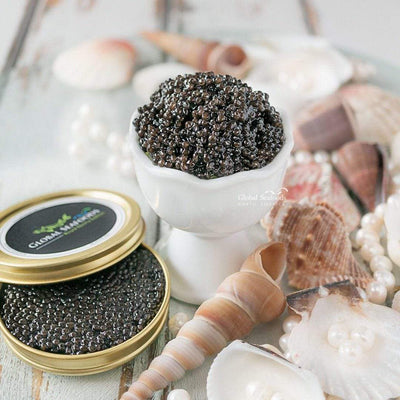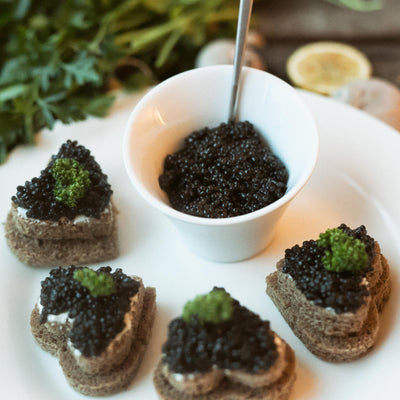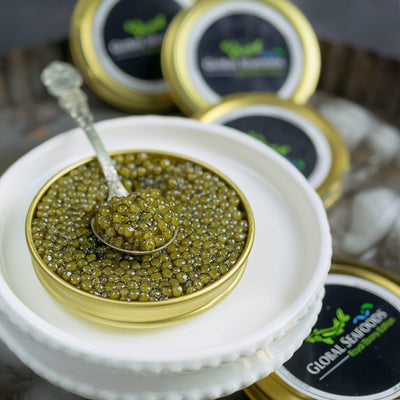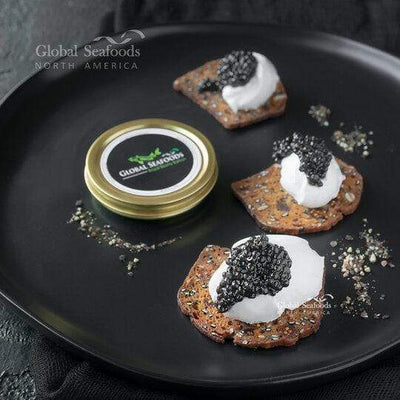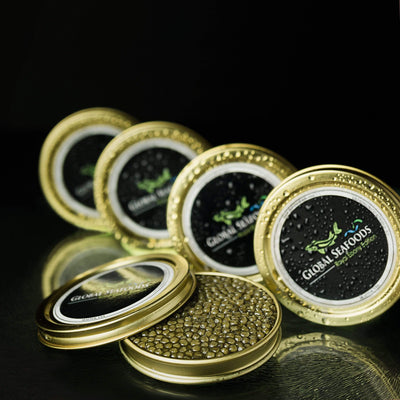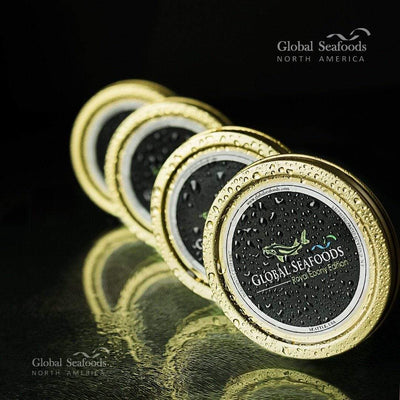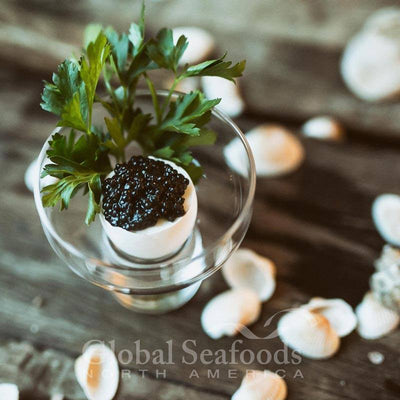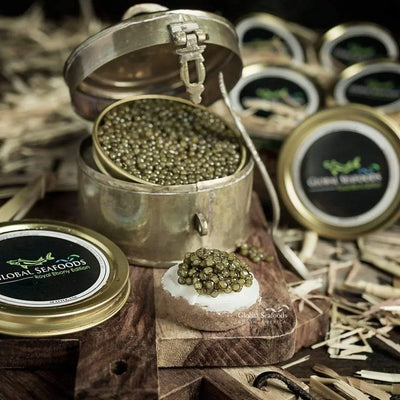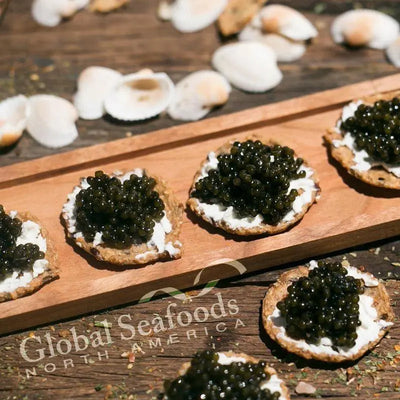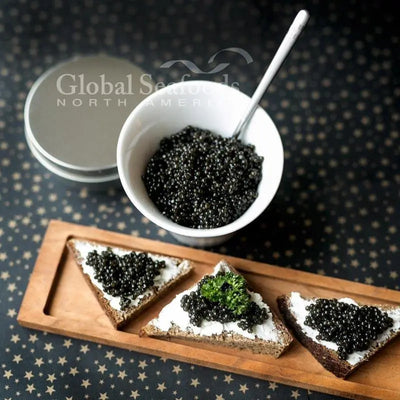The Art of Creating Black Caviar: A Comprehensive Guide to This Luxury Delicacy

Creating Black Caviar: A Comprehensive Guide
Black caviar has long been regarded as one of the world’s most luxurious delicacies, revered for its rich taste, silky texture, and exceptional quality. Harvested from sturgeon species like Beluga, Kaluga, and White Sturgeon, black caviar is synonymous with sophistication and exclusivity. But beyond its reputation as a gourmet treat, the process of creating black caviar is a fine art that requires precision, expertise, and dedication.
In this comprehensive guide, we’ll dive deep into the world of black caviar, uncovering everything from its origins and production methods to the differences between caviar varieties. Whether you’re a seasoned caviar connoisseur or someone looking to learn more about this exquisite food, this guide will provide you with a rich understanding of black caviar and its place in the world of fine dining.
For additional tips on how to enjoy and serve caviar, check out the Global Seafoods YouTube channel, where you'll find expert advice and creative recipes.
What Is Black Caviar? Understanding the Basics
Black caviar is the roe, or eggs, harvested from sturgeon species, which have been delicately salted and processed for consumption. Known for its smooth texture and briny, buttery taste, caviar is one of the most coveted gourmet foods. However, not all caviar is created equal.
The most prized varieties of black caviar come from sturgeon species like Beluga, Kaluga, and White Sturgeon, each offering a unique flavor profile, texture, and size. The quality of the caviar is determined by several factors, including the fish species, the environment in which they are raised, and the harvesting process.
Key Characteristics of Black Caviar:
- Color: Ranges from light to dark gray, with the darkest varieties often considered the most luxurious.
- Flavor: Balanced between briny, buttery, and slightly nutty, with variations in intensity depending on the sturgeon species.
- Texture: Silky, with a delicate pop that enhances the overall mouthfeel.
As chef Thomas Keller once said, “Caviar is the ultimate expression of nature’s elegance—refined, delicate, and truly a gift from the sea.”
For those seeking the finest caviar, Beluga Caviar is considered one of the rarest and most prized, known for its large pearls and rich, creamy taste.
The History and Prestige of Black Caviar
Caviar has been enjoyed by royalty, aristocrats, and food enthusiasts for centuries. Its history dates back to ancient Persia, where the word "caviar" itself originated, meaning "egg-bearing." Over time, caviar became a symbol of wealth and luxury, gracing the tables of Russian tsars and European monarchs.
In the modern era, black caviar remains a prestigious delicacy, often associated with celebrations, fine dining, and opulence. Its high price is justified by the lengthy and intricate process required to produce it, from the care of the sturgeon to the meticulous harvesting of the eggs.
How Black Caviar Is Made – A Step-by-Step Process
The process of creating high-quality black caviar is an art form that blends traditional methods with modern aquaculture practices. Here’s a step-by-step breakdown of how black caviar is harvested and prepared:
1. Raising the Sturgeon
The journey to black caviar begins with the careful rearing of sturgeon, often in controlled environments such as fish farms. Sturgeon can live for decades, but they take years to mature and produce eggs. Beluga sturgeon, for example, may take up to 20 years to reach maturity. Sturgeon are raised in clean, natural environments to ensure the best quality eggs.
- Sustainability and Aquaculture: In recent years, sustainable caviar farming has gained importance due to overfishing and habitat loss in the wild. Controlled farms like those used for Kaluga Caviar are now producing caviar that meets both quality and environmental standards.
2. Harvesting the Roe
Once the sturgeon are mature, experts carefully monitor the fish to determine when they are ready to produce eggs. Harvesting is done with precision to ensure the eggs are extracted at the right time for optimal flavor and texture.
The harvesting process involves gently removing the roe from the sturgeon. It’s a delicate process, and any mishandling can affect the quality of the caviar. Once harvested, the eggs are rinsed and screened to separate any impurities, leaving only the pristine caviar pearls.
-
Key Varieties:
- Paddlefish Caviar: Often called “American caviar,” it offers a rich, earthy flavor with smaller, darker eggs.
- White Sturgeon Caviar: Known for its creamy flavor and firm texture, White Sturgeon caviar is a favorite among connoisseurs.
3. Salting and Curing
After the roe is harvested, it undergoes a curing process where it is lightly salted to enhance the flavor and preserve the eggs. This process, known as "malossol" (Russian for "little salt"), is designed to retain the natural flavor of the eggs while adding just enough salt for preservation.
The curing process is critical, as too much salt can overpower the delicate flavor of the caviar, while too little can affect its shelf life.
- Fun Fact: Malossol caviar, like California White Sturgeon Caviar, is considered the highest quality due to its low salt content, allowing the true flavor of the roe to shine through.
4. Packaging and Storage
Once the caviar is salted and cured, it is carefully packaged in airtight tins or jars to preserve its freshness. Caviar must be kept at near-freezing temperatures to maintain its texture and flavor. It is then shipped to high-end retailers and distributors, where it reaches the tables of discerning customers.
For the best results, it’s essential to store caviar properly—ideally at temperatures between 28°F and 32°F. Once opened, caviar should be consumed within 48 hours to ensure its freshness and quality.
Types of Black Caviar – What Sets Each Variety Apart
Black caviar is available in several different varieties, each offering unique characteristics in terms of taste, texture, and appearance. Here are the most popular types of black caviar:
1. Beluga Caviar
Perhaps the most famous and luxurious variety, Beluga Caviar is known for its large, glossy pearls that range from pale gray to black. Beluga caviar has a creamy, buttery flavor with a delicate pop and is often considered the gold standard in the caviar world.
2. Kaluga Caviar
Similar in texture and flavor to Beluga, Kaluga Caviar is harvested from Kaluga sturgeon. It offers large, firm eggs with a rich, earthy taste. Due to the restrictions on Beluga caviar, Kaluga caviar has gained popularity as a sustainable alternative.
3. White Sturgeon Caviar
A favorite among chefs and caviar enthusiasts alike, White Sturgeon Caviar is prized for its clean, smooth flavor and firm texture. It’s slightly smaller than Beluga, but offers a more delicate, nutty taste.
4. Paddlefish Caviar
While not a true sturgeon caviar, Paddlefish Caviar is often referred to as American caviar. It has smaller, darker eggs and a bold, earthy flavor that sets it apart from other types of caviar.
How to Serve and Enjoy Black Caviar
Serving black caviar is an art in itself. Traditionally, caviar is enjoyed on its own, allowing its delicate flavors to shine through. Here are a few tips on how to serve black caviar properly:
- Serve Cold: Caviar should be served chilled, preferably on a bed of crushed ice. Never freeze caviar, as it can ruin the texture.
- Use Non-Metal Utensils: Always use non-metallic spoons, such as those made of mother of pearl, to avoid affecting the taste of the caviar.
- Pairing Ideas: Caviar pairs wonderfully with blinis (small pancakes), crème fraîche, and toast points. It can also be served with chilled vodka or Champagne for a classic, elegant pairing.
For more pairing ideas and recipes, visit the Global Seafoods Caviar Collection, where you can find a range of caviar varieties to suit your palate.
Frequently Asked Questions (FAQs) About Black Caviar
Q1: What’s the difference between black and red caviar?
A: Black caviar comes from sturgeon species, while red caviar typically comes from salmon. Black caviar is considered more luxurious due to the rarity of sturgeon eggs and the longer maturation process.
Q2: How long does caviar last once opened?
A: Once opened, caviar should be consumed within 48 hours for the best flavor and freshness. Always store caviar in the coldest part of your refrigerator.
Q3: Is all black caviar sustainable?
A: Not all black caviar is sustainable, but many farms now practice environmentally responsible harvesting. Look for caviar from reputable suppliers like Global Seafoods, which offers sustainably sourced varieties like Kaluga Caviar.
Q4: How should I store unopened caviar?
A: Unopened caviar should be kept in the coldest part of your refrigerator, ideally between 28°F and 32°F. This will help preserve its freshness and flavor.
Q5: Is there a difference in taste between farmed and wild caviar?
A: Farmed caviar has improved significantly in recent years, with many varieties offering the same, if not better, taste and quality as wild-caught caviar. Farmed caviar is also more sustainable.
Conclusion: Experience the Elegance of Black Caviar
Black caviar is much more than a luxury food—it's a testament to the skill and craftsmanship of the producers who cultivate it. Whether you’re indulging in the rich, creamy texture of Beluga Caviar or savoring the earthy flavors of Paddlefish Caviar, understanding the art behind caviar production deepens your appreciation for this delicacy.
For the highest quality caviar and expert advice, explore the range of caviar available at Global Seafoods, and check out their YouTube channel for more insights and tips on how to enjoy this timeless delicacy.
Also in News

Columbia River Steelhead | Life Cycle, Conservation & Facts
Columbia River steelhead are one of the most resilient salmonid species, embarking on an incredible migration from freshwater to the ocean and back. Learn about their spawning habits, juvenile development, oceanic journey, and conservation efforts. Discover why steelhead are a prized fish for both anglers and seafood lovers.

Mastering Dover Sole: Cooking & Serving Guide for a Gourmet Experience
Dover Sole is a culinary delight known for its mild flavor and tender texture. Whether you're pan-frying for a crispy finish, baking for a healthy meal, or grilling for a smoky touch, this guide provides expert tips on preparing, cooking, and serving Dover Sole. Elevate your seafood dishes and enjoy gourmet flavors at home.

Cocktail Caviar Pairings: Best Drinks to Complement Exquisite Caviar
Pairing caviar with the right cocktail enhances both flavors, turning any occasion into an indulgent experience. Learn expert tips on pairing champagne, martinis, Moscow mules, and more with the perfect caviar selection.

